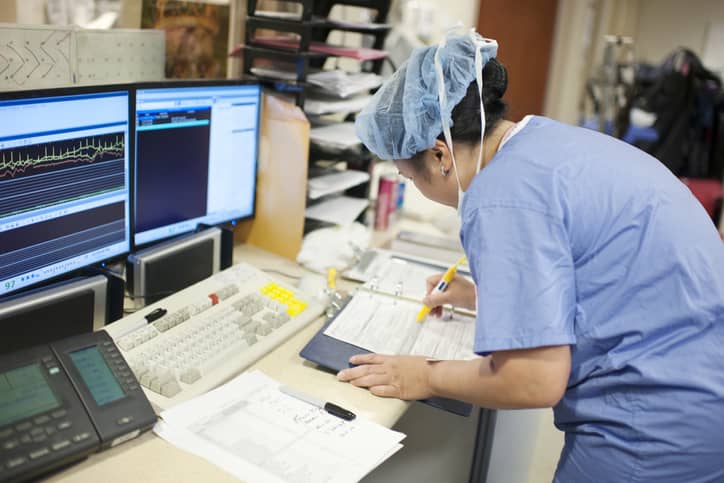Healthcare in the United States is undergoing a transformation as hospitals and other medical facilities switch to a value-based model that puts more emphasis on patient outcomes and efficiency.
Getting there may require further implementation of innovative technology and a more data-driven business model. However, all the latest trends in technology and data analysis cannot do the job alone.
People and processes are still the main components in making lasting, meaningful change. That’s the reason many healthcare operations have turned to the process improvement methodologies of Lean, Six Sigma and Lean Six Sigma to make a difference.
Patients want these changes, as well. A 2018 Gallup survey reported that 55% of respondents picked “the availability and affordability of healthcare” as something they have a “great deal” of concern about. That made it the No. 1 concern of those surveyed, ahead of 14 other issues, including crime, the availability of guns, terrorist attacks and environmental issues.
Lean Six Sigma and Healthcare
Already, healthcare operations around the country have started turning to Lean Six Sigma to make real changes in process improvement. Results from the 2017 HealthLeaders Media Patient Experience Survey report showed that among healthcare operations that formally implement process improvements, 87% reported higher patient satisfaction scores.
A few examples where healthcare is adopting Lean and Six Sigma include:
- Dallas-based Intrepid USA had 500 employees voluntarily earn certification in Six Sigma. The company has become a Six-Sigma-accredited organization
- Michigan healthcare company McLaren Greater Lansing decided to train its entire staff as Yellow Belts in Six Sigma
- The state of Nebraska put Lean Six Sigma methodologies to work to streamline operations, improving services and saving taxpayers’ money
Lean Six Sigma and Patient Safety
None of this would likely surprise Patrick O’Shaughnessy, a doctor who has served as Executive VP and Chief Medical Officer of Catholic Health Services (CHS) of Long Island since 2013.
O’Shaughnessy told the Long Island Press that CHS has implemented “robust process improvement tools” such as Lean and Six Sigma to not only improve healthcare service delivery, but also to focus on better patient safety.
As part of that plan, CHS implemented a Safety Starts With Me Program. Within that, there is a Daily Patient Safety Principles list that emphasizes creating a culture of safety through clear communication, attention to detail, having a questioning attitude (empowering employees is a basic tenet of Lean) and supporting best practices every day to reduce harm.
The result? CHS has seen a 70% drop in hospital-acquired infections.
“I always say our mantra for our patients should be: “Don’t harm me; heal me; be kind to me,” O’Shaughnessy told the Long Island Press. “To positively impact patient quality of care, we launched CHS on a journey to high reliability.”
O’Shaughnessy also has established the Pinnacle Awards for Quality and Patient Safety that recognizes the best process improvement efforts by healthcare operations in New York.
Universities Offer Lean Six Sigma Expertise
According to an article by Emory University, there are a growing number of real-life examples that show how industries are applying Lean Six Sigma principles to improve service quality, lower costs and raise customer satisfaction.
A Purdue University article notes that errors in medical operations can lead to deaths, making the error-reducing principles of Lean Six Sigma even more critical in a healthcare setting.
At Indiana University, the Kelley School Physician MBA Program incorporates Lean Six Sigma into the curriculum. Many physicians enter the program because they want to better understand “the business of medicine,” according to a release from the university.
Tom Lardner, a 2017 Indiana University graduate and a urologist, said he used Lean Six Sigma techniques acquired in the Physician MBA Program to lower by 29 minutes the total time spent by patients for routine procedures at the medical center where he works.
Gardner said, “”I knew it was possible; I just needed the tools and knowledge to do it.”



